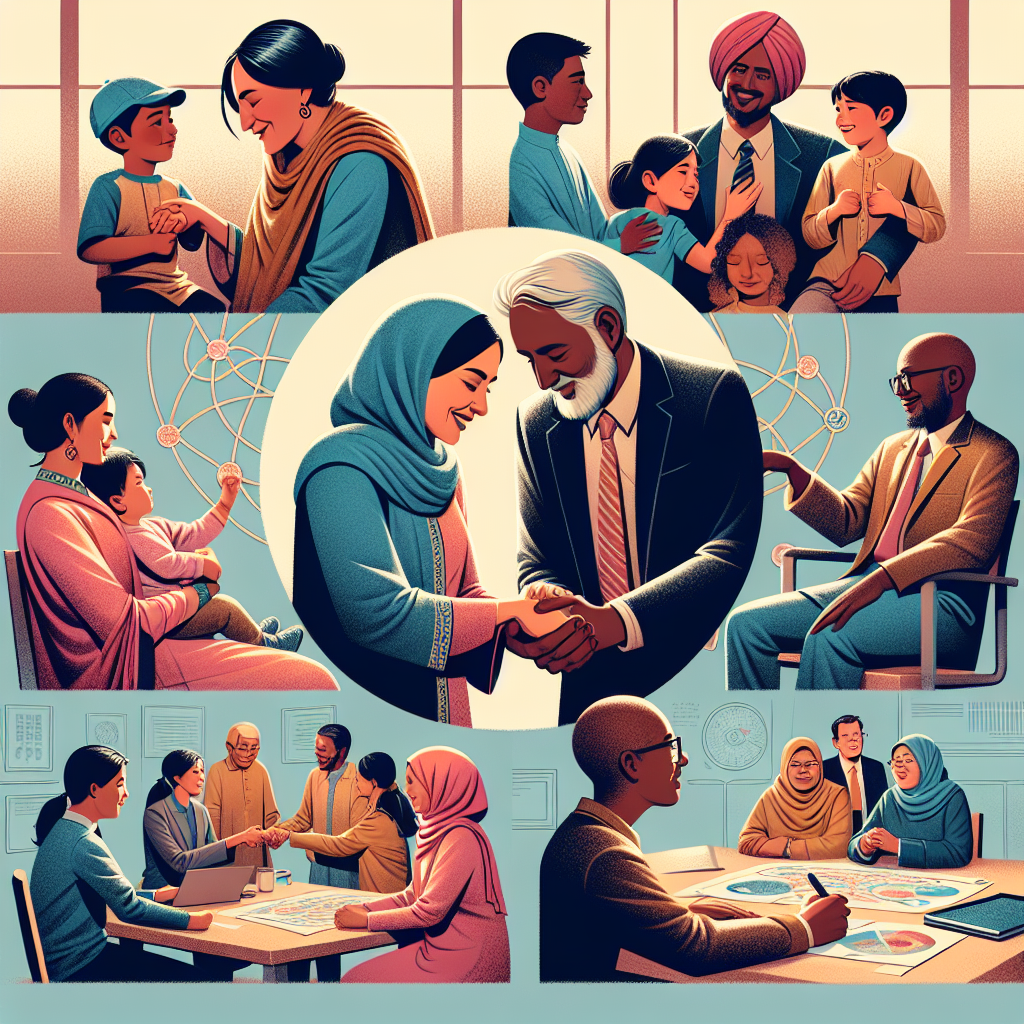Have you ever wondered about the different types of relationships that people form? Whether it’s friendships, romantic partnerships, or even familial bonds, relationships are an integral part of our lives. In this article, we will explore the most common relationship types that exist and delve into the dynamics that define them. From platonic friendships to soulmate connections, get ready to discover the diverse array of relationships that shape our world.

Monogamous Relationships
Definition
A monogamous relationship is a type of romantic relationship where both individuals are committed to being exclusive and only have romantic and sexual interactions with each other. In this type of relationship, both partners agree not to engage in physical or emotional intimacy with other people.
Characteristics
Monogamous relationships are characterized by trust, loyalty, and exclusivity. Couples in monogamous relationships often prioritize each other’s needs and well-being above all else. They communicate openly and honestly, building a strong emotional connection and fostering a sense of security.
Advantages and Disadvantages
One of the significant advantages of monogamous relationships is the deep emotional connection that can be developed between partners. This exclusivity allows for a stronger sense of trust and intimacy. Additionally, monogamous relationships often provide stability and a sense of long-term commitment.
However, monogamous relationships can also come with challenges. The commitment to exclusivity may require sacrifices, such as refraining from engaging in potentially fulfilling connections with other people. It is crucial for both partners to be on the same page and have a clear understanding of their boundaries to avoid feelings of resentment or jealousy.
Open Relationships
Definition
An open relationship is a type of non-monogamous relationship where both partners agree to have romantic or sexual relationships with other individuals. Unlike monogamous relationships, open relationships allow for emotional and/or physical connections outside of the primary partnership.
Characteristics
Open relationships are characterized by their flexibility and non-traditional nature. Partners in open relationships often communicate openly about their desires and boundaries. They may establish rules regarding disclosure of other relationships, safe practices, and emotional expectations.
Advantages and Disadvantages
One of the advantages of an open relationship is the freedom to explore connections with others while maintaining the primary partnership. This can lead to personal growth, new experiences, and increased self-awareness. Open relationships also highlight the importance of trust and open communication.
However, open relationships require a high level of trust, clear communication, and emotional maturity. Feelings of jealousy or insecurity may arise, and navigating multiple relationships can be complex and challenging. It is essential for partners to set and respect boundaries, as well as regularly check in with each other to ensure both parties’ emotional well-being.
Polyamorous Relationships
Definition
Polyamorous relationships are a form of non-monogamy where individuals have multiple concurrent emotional and/or sexual relationships with the knowledge and consent of all parties involved. Unlike open relationships, polyamory emphasizes the development of emotional connections, not just casual or sexual encounters.
Characteristics
Polyamorous relationships are characterized by their commitment to fostering and maintaining multiple, simultaneous romantic connections. Individuals in polyamorous relationships may form primary partnerships while also engaging with secondary or additional partners. Communication is key in managing expectations, boundaries, and emotional needs.
Advantages and Disadvantages
One significant advantage of polyamorous relationships is the ability to form deep emotional connections with multiple partners. Partners in polyamorous relationships often emphasize self-growth, personal freedom, and emotional learning. Polyamory can provide a sense of increased support, love, and diversity in relationships.
However, polyamorous relationships require open and honest communication, as jealousy and insecurities can still emerge. Balancing time, energy, and emotional resources can be challenging, and it may be necessary to establish clear boundaries and regularly assess the well-being of all parties involved. Not all individuals may be comfortable or suited for polyamory, and it is crucial for partners to have ongoing discussions to ensure the relationship’s health and happiness.
Long-Distance Relationships
Definition
A long-distance relationship (LDR) is a romantic relationship where the partners are geographically separated, often by a significant distance. In an LDR, couples must navigate the challenges of maintaining their connection and intimacy despite the physical distance between them.
Characteristics
Long-distance relationships require a strong foundation of trust, communication, and commitment. Partners in LDRs often rely heavily on technology to stay connected, using video calls, messaging apps, and phone calls to bridge the distance. LDRs often involve periods of physical separation, with partners living in different cities, countries, or even continents.
Challenges and Coping Strategies
One of the main challenges of long-distance relationships is the lack of physical proximity and the inability to engage in regular activities together. This can create feelings of loneliness and frustration, as well as challenges in maintaining intimacy. However, there are several coping strategies that can help mitigate these challenges.
Regular and open communication is vital in LDRs. Setting aside dedicated time for video calls or phone calls can help partners feel connected and involved in each other’s lives. Planning visits and creating shared experiences, even if they are infrequent, can provide a sense of anticipation and closeness. Trust and emotional support are also essential; partners should be able to express their needs, concerns, and fears without judgment or criticism.

Interfaith Relationships
Definition
An interfaith relationship is a romantic relationship between individuals who follow different religious beliefs or faith traditions. In interfaith relationships, partners may have different religions, spiritual practices, or levels of religious involvement.
Challenges and Considerations
Interfaith relationships can present unique challenges, mainly related to differences in religious beliefs and practices. Partners may have different understandings of divinity, rituals, or moral values, which can lead to conflicts or misunderstandings. It is essential to approach these challenges with open-mindedness, respect, and a willingness to learn and understand each other’s perspectives.
Finding Common Ground
In interfaith relationships, finding common ground and areas of shared values can help bridge the gap that religious differences may create. Identifying shared values, principles, or traditions that both partners can participate in and engage with can foster a sense of unity and understanding. Open and non-judgmental communication is key, as partners should feel comfortable expressing their beliefs and concerns without fear of judgment or rejection.
Interracial Relationships
Definition
An interracial relationship is a romantic relationship between individuals from different racial or ethnic backgrounds. Interracial relationships involve partners who come from diverse racial backgrounds and may experience both the benefits and challenges associated with diversity.
Challenges and Prejudices
Interracial relationships can sometimes be met with cultural, societal, or familial prejudice and discrimination. Partners may face disapproval or negative attitudes from family members, friends, or even strangers. It is important for both partners to support each other and actively confront and challenge these prejudices, both individually and as a couple.
Building a Strong Foundation
To build a strong foundation in an interracial relationship, it is crucial to foster open and honest communication. Partners should discuss their experiences, concerns, and feelings related to their racial identities. Learning about each other’s cultures, traditions, and histories can also help deepen understanding and appreciation for each other’s uniqueness. Celebrating diversity and embracing differences can strengthen the bond in an interracial relationship.

Same-Sex Relationships
Definition
A same-sex relationship is a romantic relationship between individuals of the same gender or sexual orientation. Same-sex relationships are an integral part of the diverse range of relationship types and have their own unique experiences and challenges.
Historical Background
Same-sex relationships have been present throughout history, but societal acceptance and legal recognition have varied widely across different cultures and time periods. It is important to acknowledge the historical struggles and progress made by the LGBTQ+ community in fighting for equality and acceptance.
Legalization and Acceptance
In recent years, there have been significant advancements in legal recognition and societal acceptance of same-sex relationships. Many countries now recognize same-sex marriage or have laws protecting LGBTQ+ individuals from discrimination. However, discrimination and prejudice may still exist in some communities, and it is essential for partners in same-sex relationships to support and advocate for each other.
Long-Term Committed Relationships
Definition
Long-term committed relationships are a type of relationship where partners have made a conscious decision to be committed to each other for an extended period. These relationships prioritize stability, emotional connection, and shared goals and values.
Shared Vision and Goals
In long-term committed relationships, partners often work together to create and maintain a shared vision of their future. They establish common goals, whether they are related to career, family, or personal growth. Long-term commitment requires ongoing communication, compromise, and alignment of values to ensure both partners are working towards a common purpose.
Maintaining Intimacy
Maintaining intimacy in long-term committed relationships is essential to ensure emotional and physical connection remains strong over time. This can involve regular date nights, exploring new experiences together, or engaging in activities that facilitate emotional intimacy, such as deep conversations, shared hobbies, or physical affection. Investing time and effort into the relationship helps to keep the bond alive and nurtures the long-term commitment.

Casual Dating
Definition
Casual dating is a type of non-serious, non-exclusive dating where individuals engage in short-term relationships without a long-term commitment. Casual dating is often characterized by a focus on having fun, exploring different connections, and not necessarily seeking a long-term partnership.
Characteristics
In casual dating, individuals often have multiple partners at the same time and may engage in casual sexual relationships. The emphasis is on enjoying the present moment and not necessarily building a long-term future together. Casual dating can provide an opportunity for self-discovery, exploring different preferences, and gaining experiences.
Casual vs. Exclusive
The key distinction between casual dating and exclusive dating is the level of commitment and exclusivity. In exclusive dating, individuals are focused on building a serious, long-term partnership with one person, whereas in casual dating, individuals may date multiple people simultaneously or have a more relaxed approach towards relationships.
Friends with Benefits
Definition
A friends with benefits relationship is a casual relationship where friends engage in sexual activity without a romantic commitment. This type of relationship allows for physical intimacy and pleasure, without the expectations or responsibilities that come with a traditional romantic relationship.
Expectations and Boundaries
Clear communication and establishing expectations and boundaries are essential in friends with benefits relationships. Both friends should openly discuss their desires, such as sexual preferences or emotional involvement limitations. It is crucial to respect each other’s boundaries, communicate openly about any changes in feelings, and regularly check in to ensure both parties are comfortable and satisfied.
Potential Challenges
Friends with benefits relationships can come with potential challenges, such as developing romantic feelings or wanting different levels of emotional involvement. It is crucial to navigate these challenges with open communication and honesty. If one friend develops romantic feelings, it is essential to discuss and re-evaluate the boundaries of the relationship to ensure both parties’ emotional well-being.


